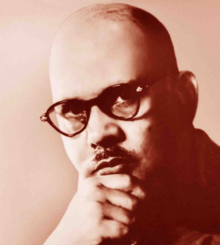Chandeshwar Prasad Narayan Singh

Sir Chandeshwar Prasad Narayan Singh, CIE (18 April 1901 – 1993)[1] was an Indian freedom fighter, diplomat and administrator.
Early life
Singh was born in Parsagarh in Saran district of Bihar.[2] He attended The Doon School in Dehradun and then obtained an M.A. from Calcutta University.[3] After returning to Bihar, he joined the national movement, getting elected to the then Bihar Legislative Council in 1927. He was also elected Chairman of the District Board of Muzaffarpur, where he organised relief efforts for earthquake victims of the 1934 Nepal–Bihar earthquake.
Career
He was conferred a Commander of the Order of the Indian Empire (CIE) in New Year Honours List of 1935.[4] In 1945, he was appointed as the Vice-Chancellor of the new Patna University. His contribution to development of a post-graduate course in the university was acclaimed by all.[5] He brought teachers of eminence from all over the country to administer the newly opened departments.[5] The Patna University Institute of Psychological Research and Service, one of the oldest psychological service centres in Eastern India was founded in 1945 by him. The institute is located at Krishna Kunj. The building housing the institute was donated to the university by the late Sir Ganesh Dutt Singh, an eminent educationist of the state.[6] In 1946 he was conferred his knighthood.[7]
After independence, in 1949, he was invited by the then Prime Minister of India, Jawaharlal Nehru, to become India's ambassador to Nepal. It was during this tenure that the King of Nepal sought refuge at the Indian embassy in 1950. After completing his tenure in Kathmandu, he was appointed as the Governor of undivided Punjab in 1953. Under his aegis that the city of Chandigarh as well as the Bhakra Dam were built. The establishment of the Kurukshetra University was his dream. He wanted to set up an institute to promote Indian culture and traditions.[8] He was also appointed as the governor of Uttar Pradesh.[2] He was a close friend of Jawaharlal Nehru.[9] Also, Pracheen Kala Kendra, an institution for arts and culture was established in Chandigarh in 1956 with his active support and kind patronage.[10] In 1958, he went as India's ambassador to Japan. There he was given an honorary doctorate from Ohtani University. Unable to continue in that post, due to ill-health, he was forced to come back to India.[citation needed]
Zamindari
Singh opposed the abolition of zamindari, along with Kameshwar Singh of Raj Darbhanga.[11]
Singh was the leader of the pro-establishment landed aristocracy. His speeches from the opposition bench against Restoration of the Bakasht Land Act and the Bihr Tenancy Act by the Congress Ministry during 1937-39 and Sri Krishna Sinha's forceful defence, though they added a memorable chapter in the province's legislative history, marked the division of the aristocracy into pro and anti-Congress factions.[12]
Retirement
After retirement he became a director of the Reserve Bank of India and the IDBI Bank, and chairman of several companies. In 1977 he was honoured with a Padma Vibhushan for meritorious services rendered to the country.[2]
His grandson, Ashok Harshwardhan, and great grandson, Aradhya Harshwardhan, are involved in various social welfare programs in their ancestral village, Sursand, to take the legacy of the family forward.[13]
References
- ^ "Sir Chandeshwar Prasad Narayan Singh – Governor of UP". upgovernor.gov.in. Retrieved 1 May 2019.
- ^ a b c "Shri. Chandeshwar Prasad Narayan Singh". Raj Bhavan (Uttar Pradesh). Archived from the original on 5 January 2009. Retrieved 19 August 2008.
- ^ "India Today, Volume 5, Issues 9-14". New Delhi: Living Media India. p. 41.
But late in the day, a new name has appeared: Doon School-educated C.P.N. Singh, 43, the Union Minister of state for defence production.
{{cite magazine}}: Cite magazine requires|magazine=(help) - ^ London Gazette
- ^ a b B K Mishra (17 November 2008). "Other Side Of The Coin". The Times of India. Retrieved 28 March 2009.
- ^ "PU institute falls prey to neglect". The Times of India. 10 February 2002. Retrieved 9 November 2008.
- ^ London Gazette
- ^ Yoginder Gupta (12 January 2007). "Critical thinkers must for growth: Datta". The Tribune. Retrieved 8 November 2008.
- ^ A. G. Noorani (September 2004). "Nehru's legacy to India". Frontline. 21 (20).
- ^ Pracheen Kala Kendra (9 November 2008). "Pracheen Kala Kendra, Organization dedicated to art and culture". Pracheen Kala Kendra. Archived from the original on 5 February 2009. Retrieved 9 November 2008.
- ^ Arvind Das (1983). Agrarian Unrest and Socio-Economic Change, 1900-1980. South Asia Books. p. 188. ISBN 978-0836409673.
- ^ Niyogi, Sumanta (2010). Essays on Modern History. Janaki Prakashan. p. 158.
- ^ https://www.jagran.com/bihar/sitamarhi-15077177.html
- 1901 births
- 1993 deaths
- University of Calcutta alumni
- Ambassadors of India to Nepal
- Ambassadors of India to Japan
- Governors of Punjab, India
- Governors of Uttar Pradesh
- Recipients of the Padma Vibhushan in literature & education
- Knights Bachelor
- Companions of the Order of the Indian Empire
- Indian knights
- 20th-century Indian educational theorists
- Bihari politicians
- People from Saran district
- The Doon School alumni
